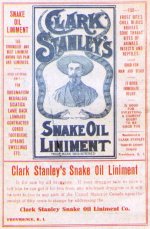DickB
Active member
Throttle-by-wire, throttle response, and Pedal Commander
Throttle response is a measure of how quickly a vehicle's engine can increase its power output in response to a driver's request for acceleration. A key factor in this is how fast the Engine Control Unit (ECU) and electronic throttle body open the butterfly valve. Can add-on electronics like Pedal Commander improve throttle response?
In the Ryker throttle-by-wire system (Figure 1), the twist grip sends a Throttle Accelerator Signal (TAS) to the Engine Control Module (ECM, Can Am's term for ECU). The ECM controls a motor in the throttle body that operates the throttle butterfly valve. This setup is often (wrongly) maligned for poor throttle response due to a delay from twist grip action to butterfly opening. This delay can be measured.
The Throttle body sends a Throttle Position Signal (TPS) back to the ECM so that the ECM knows exactly the position of the butterfly valve. By monitoring the TAS and TPS, we can see the relationship between the twist grip position and movement and that of the butterfly valve, the key to throttle response. I did exactly that using an oscilloscope attached to my Ryker Rally 900.
Figure 2 shows the relationship between twist grip and butterfly valve on my Ryker powered on but not running. The blue line is the TAS and the yellow line is the TPS. The TAS varies from .5V at rest to 1.5V fully twisted (.3V twisted back for the start sequence), and the TPS varies from about .5V to 1.8V. (There are actually two TAS and two TPS signals for redundancy, but only one set is needed to make measurements.) To make this measurement, I twisted the grip fast, held it briefly, and then let it snap back to rest. The vertical white dotted lines are measurement cursors, and the delta time is displayed at the lower right corner in orange – 76mS, or less than 1/10 second, to fully twist. This is literally faster than the blink of an eye. The butterfly opens equally as fast, albeit with a small delay.
In Figure 3 I've moved a copy of the TPS over the TAS, and adjusted it to the same scale vertically as the TAS. This allows us to better see the actual delay in butterfly response from twist grip, which is the red area. So there is a delay, but it is less than 50 ms (1/20th second).
Note that when I release the twist grip, it snaps back much faster than I opened it manually – almost instantly. But the butterfly does not close as fast. Why not? The butterfly is operated by an electric motor, which can only spin so fast. The motor also has to overcome inertia in the butterfly valve and the gears that connect the motor to the butterfly valve. Overcoming inertia is why the TPS takes some time to curve upward as the butterfly mechanism goes from zero to maximum speed and downward as it slows back to zero speed fully opened. When up to speed, the maximum rate at which the throttle body butterfly can operate is called the slew rate (shown in orange), and determines the slope of the curve. The Ryker slew rate looks to be about 60mS, which from what I understand is quite good.
If the ECM were limiting throttle response, it would do so by limiting the speed of the butterfly below the maximum throttle body slew rate. We see that normally it does not.
Can Pedal Commander increase butterfly opening speed and consequently throttle response?
Pedal Commander plugs in between the twist grip and the ECM, and alters the TAS. I don't have a Pedal Commander to measure, but fortunately Pedal Commander has charts on their web site that detail operation (Figure 4).
In Figure 5, I copied the Pedal Commander Sport Mode chart and overlaid it with my measurement chart. The dark blue line illustrates what the TAS would look like with Pedal Commander installed. Noting that the initial slope of the Pedal Commander TAS is virtually the same as the slope of the TAS of my twist grip snapping back, we can expect the same TPS response with the same slew rate on opening (although inverted). I superimposed that on the chart in orange. Note that Pedal Commander actually decreases the TAS slope as the twist grip approaches fully twisted, so the actual TPS slope would not be as aggressive as I have illustrated in that area. You can see that there is likely very little difference in TPS (actual butterfly position and speed) with and without Pedal Commander – maybe 20mS or 2/100th of a second. Note also that if I were able to twist just a fraction faster, as fast or faster than the throttle body slew rate, there would be absolutely no difference. (I didn't really pay attention to trying to twist as fast as possible, just fast.)
If I had a Pedal Commander, I'd measure it, but any difference in TPS would be so small as to be negligible.
So, while it is technically true that throttle-by-wire exhibits a delay between grip twist and butterfly, and thus throttle response, the delay is very small. Also, the delay, and the maximum speed at which the butterfly can open, is determined by the characteristics of the throttle body motor speed and the mass of the moving parts. No electronics can make it go faster than the throttle body slew rate. We see that the ECM is not adding any delay in butterfly opening over the physical slew rate of the throttle body, but is operating it as fast as is physically possible. The ECM is not contributing to slow throttle response.
Why do many claim improved throttle response and/or acceleration with Pedal Commander? Because Pedal Commander does make the twist grip more sensitive, a small twist of the grip with it will open the butterfly more and thus deliver more power than the same small twist without it. This increase in sensitivity is perceived as improved throttle response. But we see that full butterfly opening and full power can be delivered as rapidly as the throttle body can operate without Pedal Commander just by twisting more.
The ECU does limit butterfly opening under certain conditions.
I wanted to see what the butterfly was doing under different Ryker modes. These tests were done with the engine running, under real world conditions, with me fully twisting the grip from a standstill.
Figure 6 is Normal mode. You can see that the butterfly initially fully opens, but within a half-second closes considerably as Traction Control takes over.
In Sport Mode, Figure 7, it stays fully open, and the tire spins considerably.
In Eco Mode, Figure 8, note that the butterfly is limited to about 2/3 opening, which is exactly what is stated in the Ryker Operator's Guide. I expected that the ECM would also limit the butterfly slew rate, but it appears not.
In conclusion, throttle-by-wire does not limit throttle response to any appreciable degree. The Ryker ECM normally opens the butterfly valve as fast as is physically possible, in less than the blink of an eye if you twist fast. No add-on electronics can make the butterfly valve open faster.
Throttle response is a measure of how quickly a vehicle's engine can increase its power output in response to a driver's request for acceleration. A key factor in this is how fast the Engine Control Unit (ECU) and electronic throttle body open the butterfly valve. Can add-on electronics like Pedal Commander improve throttle response?
In the Ryker throttle-by-wire system (Figure 1), the twist grip sends a Throttle Accelerator Signal (TAS) to the Engine Control Module (ECM, Can Am's term for ECU). The ECM controls a motor in the throttle body that operates the throttle butterfly valve. This setup is often (wrongly) maligned for poor throttle response due to a delay from twist grip action to butterfly opening. This delay can be measured.
The Throttle body sends a Throttle Position Signal (TPS) back to the ECM so that the ECM knows exactly the position of the butterfly valve. By monitoring the TAS and TPS, we can see the relationship between the twist grip position and movement and that of the butterfly valve, the key to throttle response. I did exactly that using an oscilloscope attached to my Ryker Rally 900.
Figure 2 shows the relationship between twist grip and butterfly valve on my Ryker powered on but not running. The blue line is the TAS and the yellow line is the TPS. The TAS varies from .5V at rest to 1.5V fully twisted (.3V twisted back for the start sequence), and the TPS varies from about .5V to 1.8V. (There are actually two TAS and two TPS signals for redundancy, but only one set is needed to make measurements.) To make this measurement, I twisted the grip fast, held it briefly, and then let it snap back to rest. The vertical white dotted lines are measurement cursors, and the delta time is displayed at the lower right corner in orange – 76mS, or less than 1/10 second, to fully twist. This is literally faster than the blink of an eye. The butterfly opens equally as fast, albeit with a small delay.
In Figure 3 I've moved a copy of the TPS over the TAS, and adjusted it to the same scale vertically as the TAS. This allows us to better see the actual delay in butterfly response from twist grip, which is the red area. So there is a delay, but it is less than 50 ms (1/20th second).
Note that when I release the twist grip, it snaps back much faster than I opened it manually – almost instantly. But the butterfly does not close as fast. Why not? The butterfly is operated by an electric motor, which can only spin so fast. The motor also has to overcome inertia in the butterfly valve and the gears that connect the motor to the butterfly valve. Overcoming inertia is why the TPS takes some time to curve upward as the butterfly mechanism goes from zero to maximum speed and downward as it slows back to zero speed fully opened. When up to speed, the maximum rate at which the throttle body butterfly can operate is called the slew rate (shown in orange), and determines the slope of the curve. The Ryker slew rate looks to be about 60mS, which from what I understand is quite good.
If the ECM were limiting throttle response, it would do so by limiting the speed of the butterfly below the maximum throttle body slew rate. We see that normally it does not.
Can Pedal Commander increase butterfly opening speed and consequently throttle response?
Pedal Commander plugs in between the twist grip and the ECM, and alters the TAS. I don't have a Pedal Commander to measure, but fortunately Pedal Commander has charts on their web site that detail operation (Figure 4).
In Figure 5, I copied the Pedal Commander Sport Mode chart and overlaid it with my measurement chart. The dark blue line illustrates what the TAS would look like with Pedal Commander installed. Noting that the initial slope of the Pedal Commander TAS is virtually the same as the slope of the TAS of my twist grip snapping back, we can expect the same TPS response with the same slew rate on opening (although inverted). I superimposed that on the chart in orange. Note that Pedal Commander actually decreases the TAS slope as the twist grip approaches fully twisted, so the actual TPS slope would not be as aggressive as I have illustrated in that area. You can see that there is likely very little difference in TPS (actual butterfly position and speed) with and without Pedal Commander – maybe 20mS or 2/100th of a second. Note also that if I were able to twist just a fraction faster, as fast or faster than the throttle body slew rate, there would be absolutely no difference. (I didn't really pay attention to trying to twist as fast as possible, just fast.)
If I had a Pedal Commander, I'd measure it, but any difference in TPS would be so small as to be negligible.
So, while it is technically true that throttle-by-wire exhibits a delay between grip twist and butterfly, and thus throttle response, the delay is very small. Also, the delay, and the maximum speed at which the butterfly can open, is determined by the characteristics of the throttle body motor speed and the mass of the moving parts. No electronics can make it go faster than the throttle body slew rate. We see that the ECM is not adding any delay in butterfly opening over the physical slew rate of the throttle body, but is operating it as fast as is physically possible. The ECM is not contributing to slow throttle response.
Why do many claim improved throttle response and/or acceleration with Pedal Commander? Because Pedal Commander does make the twist grip more sensitive, a small twist of the grip with it will open the butterfly more and thus deliver more power than the same small twist without it. This increase in sensitivity is perceived as improved throttle response. But we see that full butterfly opening and full power can be delivered as rapidly as the throttle body can operate without Pedal Commander just by twisting more.
The ECU does limit butterfly opening under certain conditions.
I wanted to see what the butterfly was doing under different Ryker modes. These tests were done with the engine running, under real world conditions, with me fully twisting the grip from a standstill.
Figure 6 is Normal mode. You can see that the butterfly initially fully opens, but within a half-second closes considerably as Traction Control takes over.
In Sport Mode, Figure 7, it stays fully open, and the tire spins considerably.
In Eco Mode, Figure 8, note that the butterfly is limited to about 2/3 opening, which is exactly what is stated in the Ryker Operator's Guide. I expected that the ECM would also limit the butterfly slew rate, but it appears not.
In conclusion, throttle-by-wire does not limit throttle response to any appreciable degree. The Ryker ECM normally opens the butterfly valve as fast as is physically possible, in less than the blink of an eye if you twist fast. No add-on electronics can make the butterfly valve open faster.
Attachments
-
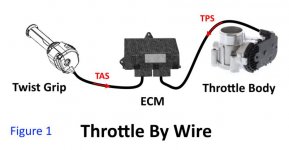 Throttle by wire.jpg29.9 KB · Views: 11
Throttle by wire.jpg29.9 KB · Views: 11 -
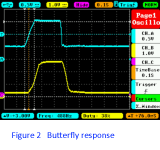 B.png40.5 KB · Views: 17
B.png40.5 KB · Views: 17 -
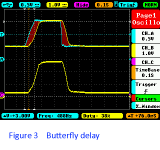 Butterfly delay.png12 KB · Views: 14
Butterfly delay.png12 KB · Views: 14 -
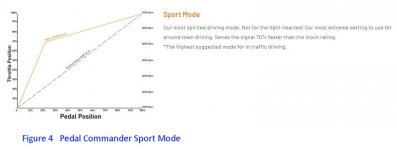 Pedal Commander Sport Mode.jpg17.3 KB · Views: 6
Pedal Commander Sport Mode.jpg17.3 KB · Views: 6 -
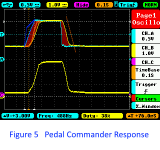 Pedal Commander response.png26 KB · Views: 12
Pedal Commander response.png26 KB · Views: 12 -
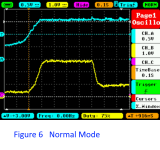 Normal mode.png45.3 KB · Views: 5
Normal mode.png45.3 KB · Views: 5 -
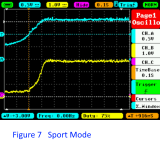 Sport mode.png44.1 KB · Views: 7
Sport mode.png44.1 KB · Views: 7 -
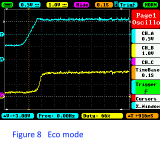 Eco mode.png14.6 KB · Views: 2
Eco mode.png14.6 KB · Views: 2
Last edited:

